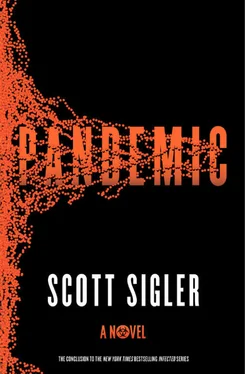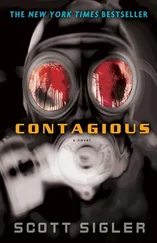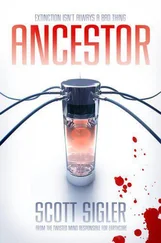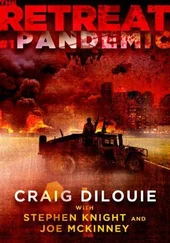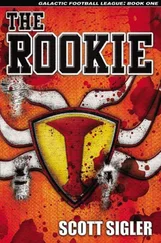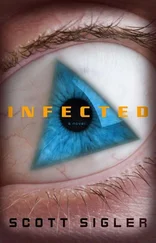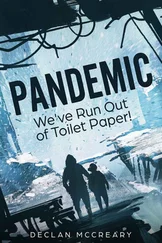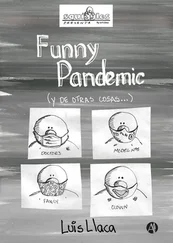She crossed her left leg over her right, a move that would have looked professional had she been wearing a dress.
“Murray, what do you want?”
He pulled a page-sized, brown envelope from inside his jacket.
“Nothing I’m about to tell you leaves this room,” he said. “Yesterday, there was an incident involving the Los Angeles , a nuclear attack submarine that was part of Operation Wolf Head.”
Operation Wolf Head . The task force assigned the duty of finding and recovering any wreckage from the alien construct that had crashed into Lake Michigan five years earlier. That construct had come to be known as “the Orbital” because, when discovered, it had been in a low, geostationary orbit that defied the accepted laws of physics.
Margaret had known about the task force, as did most of the public. The government couldn’t hide the fact that they’d moved warships onto the Great Lakes. But she hadn’t known a nuclear sub was involved.
Neither, apparently, had Clarence.
“I thought the Los Angeles had been scrapped,” he said. “And how could you get it through the Saint Lawrence Seaway without being seen?” He sounded annoyed, maybe even a little humiliated at being left out of the big-boy loop: Mister Super-Agent wasn’t privy to all the secrets, it seemed, and that fact burned.
Murray tapped the edge of the envelope against his cane. “We converted her into a search vehicle assigned with scouring the bottom. Slipped her through the Saint Lawrence with a fake superstructure that hid the sail and outline. Looked like just another tanker. What matters is that for five years, the crew of the Los Angeles found nothing of note. Six days ago the sub’s commander reported a significant discovery. Two days ago, the flotilla lost contact with the sub. Last night, the Los Angeles fired torpedoes at — and sank — the guided missile destroyer Forrest Sherman and the Coast Guard cutter Stratton .”
Clarence sat forward. “ Sank ? Heavy casualties?”
Murray nodded. “Two hundred and forty-four crew from the Sherman are dead. Fifty-seven from the Stratton . Seven more from the Truxtun , another destroyer, which was hit but remains afloat. We’re assuming the entire crew of the Los Angeles perished — that’s another hundred and twenty. In total, four hundred and twenty-eight dead or lost and presumed dead. Considering the number of wounded, we’re still adding to the list.”
Clarence sagged back into the couch.
Margaret suddenly wanted to go back upstairs and sit down at her computer. She could look at the blogs and read the comments, see if people were still talking about her — anything was better than hearing this.
Murray kept tapping the envelope against his cane, a rat-tat-tat beat that paced his words. “A third destroyer, the Pinckney , took out the Los Angeles . The Truxtun remains afloat, although it can’t do much. Right now the survivors of the sunken ships are all on board the Pinckney and on the Carl Brashear , a naval cargo ship converted for Orbital-related research.”
Clarence’s face wrinkled in indignation. “You didn’t evac the wounded to mainland hospitals? That’s not—”
Margaret’s left hand found Clarence’s knee. An automatic gesture, a way for her to tell her man relax , even though he apparently wasn’t her man anymore.
“The wounded can’t leave,” she told him. “No one there can.”
Clarence blinked, then he got it. Any of those survivors — wounded or not — could be infected. He turned back to Murray.
“The media,” Clarence said. “What’s the cover story? How do you explain the battle?”
“We don’t,” Murray said. “The flotilla was in the upper middle part of Lake Michigan. The shore was twenty-five miles away to both the east and west, a hundred to the north and two hundred to the south. Nobody on land saw a thing. The battle occurred in a no-fly zone, so there was zero civilian air traffic. The sailors themselves won’t be leaking the story, because right now no one leaves the task force — for the rather obvious reason that somehow escaped you.”
Hundreds dead, just like that. A U.S. ship sinking other U.S. ships; Margaret knew the infection could make that happen, could take over a host’s brain and make him do horrible things.
“Cellulose tests,” she said. “Any positives?”
She had to ask, even though she didn’t want to know the answer. Inside a host’s body, the infection built organic scaffolding and structures from cellulose, a substance produced by plants that was not found in the human body anywhere outside of the digestive tract. She and Amos had invented a cellulose test so accurate it left almost no doubt: if victims produced a positive result, it was already too late to save them.
“Two,” Murray said. “Both from corpses.”
Positive tests . Just the thought of it made Margaret sick.
The infection was back.
Murray offered Margaret the envelope.
She reached for it, an automatic movement, then she pulled her hand back.
“You don’t want me,” she said, her voice small and weak. “I… this is all horrible, but I put in my time. I can’t go through this again.”
Murray’s lip curled up ever so slightly, a snarling old man who wasn’t used to hearing the word no .
“Worst loss of life in a naval engagement since Vietnam, and it happened right here at home,” he said. “Three ships destroyed, one damaged, about three billion dollars’ worth of military assets gone, and we have no idea what really happened. So pardon my indelicate way of speaking my mind, Montoya, but look at the motherfucking pictures!”
He was going to yell at her? Like she was some intern who would jump at his every word?
“Get Frank Cheng to look at them,” she snapped. “He’s your fair-haired boy.”
Murray nodded. “So you know Cheng’s the lead scientist. I see you haven’t completely tuned out.”
She huffed. “It’s not like Cheng makes it hard. He probably has reporters on speed dial so he can make sure his name gets out there. Send him to your task force. He might even bring along a camera crew.”
Murray’s eyes closed in exasperation. Cheng’s desire to be recognized as a genius clearly rubbed the director the wrong way.
Clarence reached out and took the envelope. Murray slowly sat back — even that minor motion seemed to cause him pain — and stared at Margaret. His fingertips played with the brass double helix atop his cane.
“Operation Wolf Head’s primary research facility is on Black Manitou Island, in Lake Superior,” he said. “That’s where Cheng is. He made the case that he should stay there to provide continuity for the entire process, as opposed to being the first person to examine the bodies.”
Margaret couldn’t hold back a smirk. She should have known Cheng’s desire to be quoted stopped at the edge of any actual danger.
“What a surprise,” she said. “I guess you get what you pay for, Murray.”
The old man’s wrinkled hands tightened on the cane.
“I wanted to pay you ,” he said. “You said no. But that doesn’t matter now, because I’m not the one asking this time — I’m here on direct orders from President Blackmon. She wants you on-site, immediately.”
That numb feeling returned. For the second time in Margaret’s life, a sitting president of the United States had asked for her. By name. She’d answered that call once, for Gutierrez; look where that had gotten her, gotten him, gotten everyone .
She heard a rattle of paper. She looked to her left: Clarence had taken the photos out of the slim envelope. He’d looked at them and was now offering them to her.
Читать дальше
